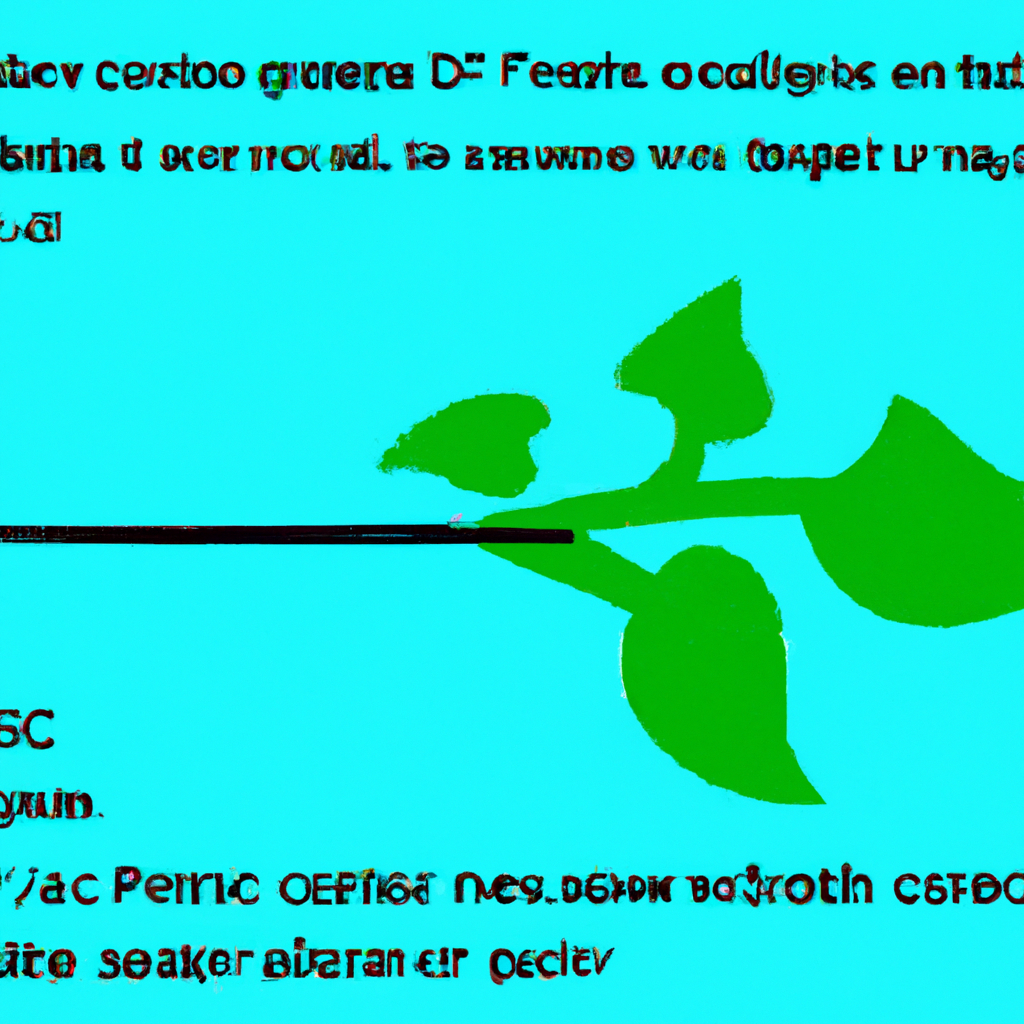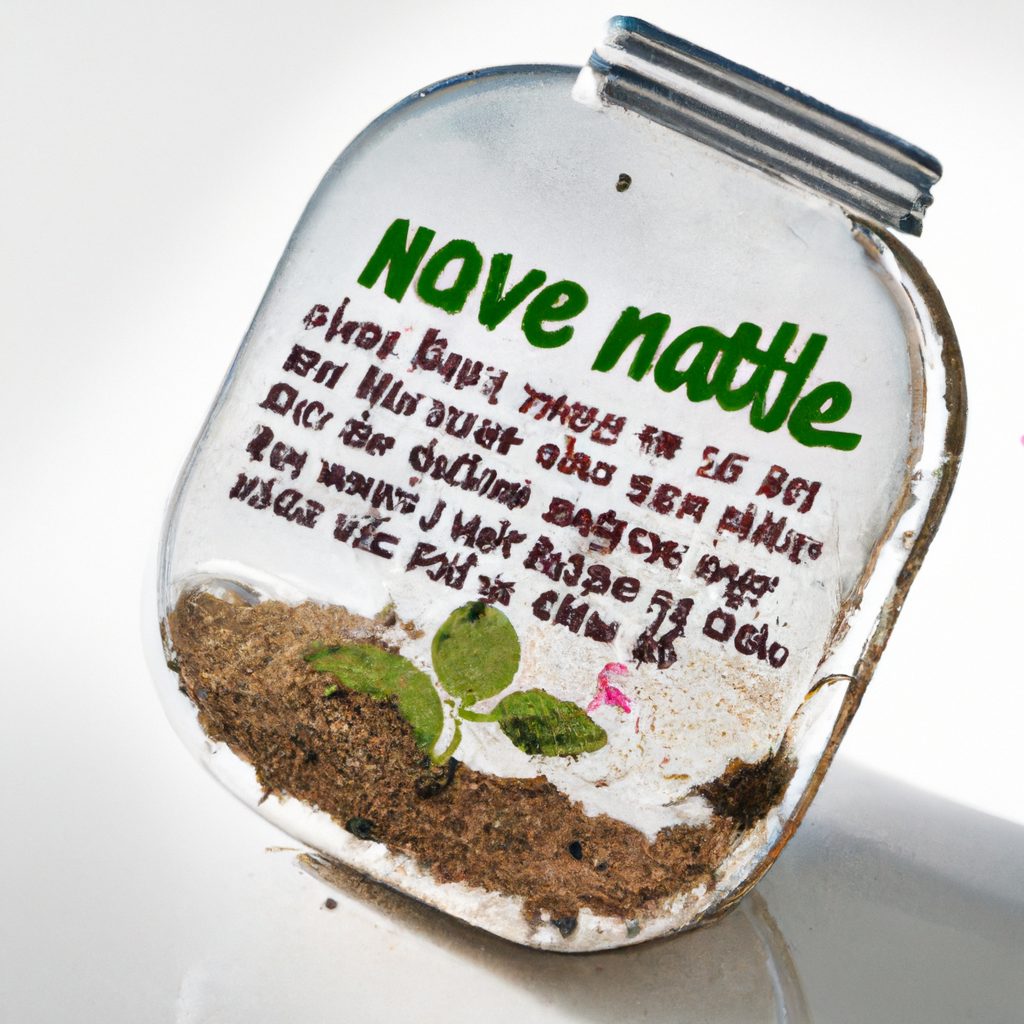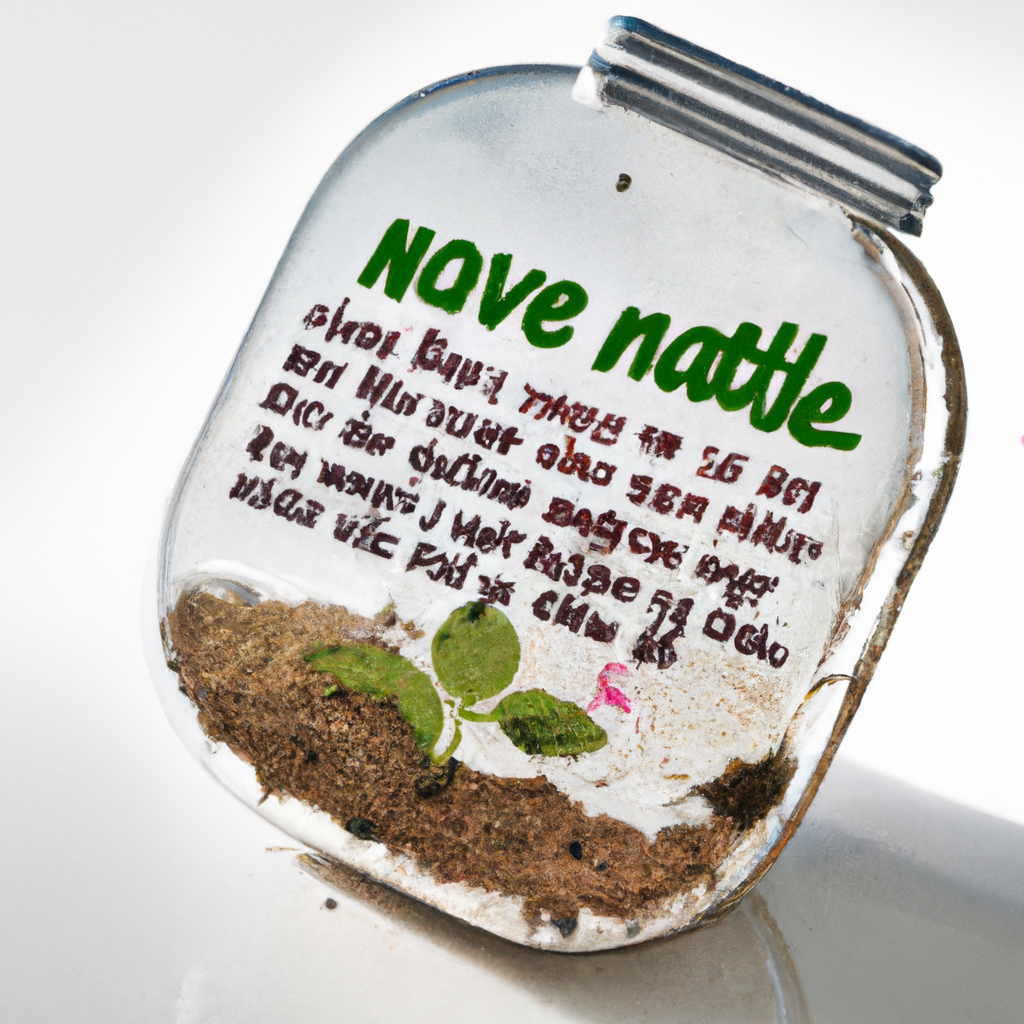Have you ever wondered how the environment in which hatchling turtles grow affects their development? It turns out that environmental enrichment plays a crucial role in shaping their growth and overall well-being. From the temperature and humidity of the nest to the presence of various physical structures, these factors stimulate the turtles’ instincts, enhance their cognitive abilities, and ultimately contribute to their successful transition into the wild. In this article, we will explore the importance of environmental enrichment in hatchling turtle development and shed light on how we can support these vulnerable creatures in their journey towards adulthood.

Importance of Environmental Enrichment
Introduction to environmental enrichment
Environmental enrichment plays a crucial role in the development of hatchling turtles. As these young turtles begin their journey in life, providing them with a suitable and stimulating environment is essential for their physical, mental, and behavioral well-being. Hatchlings that are exposed to enriched environments are more likely to exhibit normal behavior patterns, develop cognitive skills, and have improved overall health compared to turtles raised in barren or inadequate conditions.
Benefits of environmental enrichment on hatchling turtle development
The benefits of environmental enrichment on hatchling turtle development are vast. By creating a rich and varied environment, hatchlings have the opportunity to engage in natural behaviors, simulate their natural habitat, and develop vital life skills. Enriched environments can positively impact the turtles’ physical, mental, and social development, leading to improved cognitive abilities, enhanced physical condition, and increased survival rates.
Impact of enriched environments on behavior and cognition
Enriched environments have a profound impact on the behavior and cognition of hatchling turtles. Providing appropriate stimuli such as varied substrates, vegetation, and visual and auditory stimulation can promote the development of natural behaviors and instincts. Hatchlings exposed to enriched environments exhibit increased exploration, foraging, and social interactions, which in turn enhance their learning abilities, problem-solving skills, and adaptability to changing surroundings.
Factors Influencing Environmental Enrichment
Natural habitat mimicry
One key aspect of environmental enrichment is to provide hatchling turtles with an environment that mimics their natural habitat as closely as possible. By recreating the conditions of their native habitat, turtles can adapt more effectively to their artificial environment. This includes considering factors such as temperature, humidity, lighting, and substrate composition to create an environment that closely resembles their original ecosystem.
Temperature and humidity regulation
Proper temperature and humidity regulation is vital for the health and well-being of hatchling turtles. Maintaining the appropriate temperature and humidity levels in their enclosure helps mimic the conditions of their natural habitat. This can be achieved through the use of heating elements, thermostats, and misting systems. By ensuring optimal temperature and humidity, turtles can thrive and develop normally.
Variety of substrates
Offering a variety of substrates in the enclosure of hatchling turtles is essential for their physical and mental stimulation. Different substrates, such as sand, gravel, or aquatic plants, allow turtles to engage in natural behaviors, including burrowing, digging, and exploring. The varied textures also provide sensory stimulation and promote proper foot and limb development.
Inclusion of vegetation
Vegetation plays a vital role in the enrichment of hatchling turtles’ environments. The presence of live or artificial plants provides hiding places, visual barriers, and opportunities for foraging. The plants also contribute to the oxygenation of the water and promote a more balanced ecosystem within the enclosure. Vegetation not only adds aesthetic value but also encourages natural behaviors and overall well-being.
Access to sunlight and UVB radiation
Exposure to sunlight and UVB radiation is crucial for the growth and development of hatchling turtles. Sunlight provides the necessary UVB rays required for the synthesis of Vitamin D3, which is essential for proper calcium absorption and skeletal development. Enclosures should be designed to provide turtles with access to natural sunlight or supplemented with UVB lighting to ensure their physiological needs are met.
Habitat Design and Enclosures
Creating a suitable habitat for hatchlings
Creating a suitable habitat for hatchling turtles involves careful consideration of various factors. The enclosure should mimic the natural habitat of the turtle species, incorporating elements such as land areas, water bodies, basking spots, and suitable substrate. Providing hiding places, opportunities for exploration, and a balanced ecosystem should also be taken into account when designing the habitat.
Selection of appropriate enclosure materials
When constructing the enclosure, it is important to select appropriate materials that ensure the safety and well-being of hatchling turtles. Non-toxic and durable materials suitable for housing aquatic animals should be chosen. Avoid using materials that may leach harmful chemicals into the water or pose a risk of injury to the turtles. Regular inspections and maintenance of enclosure materials are necessary to ensure their integrity and safety.
Spatial considerations and size requirements
The size and spatial considerations of the enclosure are critical for the development and overall health of hatchling turtles. Hatchlings need adequate space to swim, explore, and exhibit natural behaviors. The enclosure should be large enough to accommodate the turtle’s growth, providing them with ample room to move and exercise. Consideration should also be given to the water depth, basking areas, and land-to-water ratio to meet the specific needs of the turtle species.
Importance of proper filtration and water quality
Maintaining proper filtration and water quality is of utmost importance in the hatchling turtle enclosure. Filtration systems help remove waste, excess food, and harmful bacteria, ensuring clean and healthy water. Regular testing of water parameters such as pH, ammonia, and nitrate levels is essential to prevent water pollution and maintain optimal conditions for the turtles.
Temperature and lighting requirements
Proper temperature and lighting are vital for the well-being and development of hatchling turtles. Thermoregulation is essential for their metabolism, digestion, and immune function. Heat sources should be installed to maintain a basking spot with the appropriate temperature range. Additionally, providing the necessary UVB lighting helps stimulate natural behavior, promote calcium metabolism, and prevent metabolic bone disease.
The Role of Diet and Feeding Methods
Nutritional needs of hatchling turtles
Meeting the nutritional needs of hatchling turtles is crucial for their growth and development. A balanced diet should comprise appropriate protein, carbohydrates, fats, vitamins, and minerals. The diet of hatchling turtles often includes a variety of commercially available pelleted food, supplemented with fresh or frozen animal and plant matter. Ensuring a proper balance of nutrients is essential for their overall health and long-term well-being.
Variety in diet and feeding strategies
Offering a variety of food items and employing different feeding strategies is essential to provide enrichment and simulate natural foraging behaviors in hatchling turtles. Along with the staple commercial diet, supplementing with live or frozen prey, such as insects, worms, or aquatic invertebrates, enriches the turtles’ diet and stimulates hunting instincts. Feeding methods, including scatter feeding or using puzzle feeders, can help engage turtles in active foraging and mental stimulation.
Feeder placement and accessibility
Proper feeder placement and accessibility contribute to the enrichment and well-being of hatchling turtles. Distributing feeding stations throughout the enclosure encourages exploration and prevents competition during feeding. Feeders should be positioned in multiple locations and at different depths for both land and water-based feeding, allowing turtles to exhibit natural behaviors while consuming their food.
Encouraging natural foraging behaviors
Environmental enrichment should aim to encourage natural foraging behaviors in hatchling turtles. Creating feeding opportunities that mimic their natural habitat, such as hiding food in substrates or placing prey items strategically, helps stimulate their searching and hunting instincts. This engages their senses, encourages physical activity, and promotes mental stimulation, resulting in enhanced overall development and well-being.

Social Interaction and Stimulation
Benefits of social interaction in hatchling turtles
Social interaction plays a crucial role in the development of hatchling turtles. By providing opportunities for group housing and socialization, hatchlings can develop social skills and behavior patterns essential for their species’ survival. Social interactions stimulate communication, establish social hierarchies, and promote a sense of security, contributing to their overall well-being and mental stimulation.
Group housing vs. individual enclosures
The decision of whether to house hatchling turtles individually or in groups depends on several factors, including the species, space availability, and individual needs. Group housing offers opportunities for social interactions, learning from peers, and the development of natural behaviors. However, individual enclosures may be necessary for certain species or individuals with specific requirements. Careful consideration should be given to the compatibility and health of the turtles when deciding on the housing method.
Importance of species compatibility
If opting for group housing, ensuring compatibility among turtle species is critical. It is important to consider the social structure, territorial behavior, and size differences when selecting turtles for cohabitation. Incompatibility can lead to stress, aggression, or injuries among the turtles. Thorough research and consulting with experts can help determine suitable combinations of turtle species for successful cohabitation.
Providing visual and auditory stimulation
To enhance the overall enrichment and stimulation of hatchling turtles, providing visual and auditory stimuli is essential. The enclosure can be designed to include hiding spots, visual barriers, or underwater features that allow turtles to observe and interact with their environment. Additionally, playing recorded sounds or providing natural or artificial elements that generate sounds can enhance the turtles’ sensory experiences and promote natural behavior patterns.
Evaluating Enrichment Effectiveness
Behavioral observations and ethograms
Behavioral observations and ethograms are valuable tools for evaluating the effectiveness of environmental enrichment. By systematically recording and analyzing the behavior of hatchling turtles, researchers and caregivers can assess the impact of enrichment strategies. Ethograms, which document specific behaviors and their frequency or intensity, help identify changes and analyze the overall well-being and activity levels of the turtles in different environmental conditions.
Measuring cognitive performance
Measuring cognitive performance is another way to evaluate the effectiveness of environmental enrichment on hatchling turtles. Various cognitive tasks, such as problem-solving puzzles or associative learning tests, can be designed to assess the turtles’ ability to learn, remember, and adapt. By analyzing their response to different cognitive challenges, the impact of enrichment can be gauged, providing insights into their intellectual development and overall mental acuity.
Impact of enriched environments on growth rates
Enriched environments have been shown to positively influence the growth rates of hatchling turtles. By providing a stimulating and varied environment, turtles engage in more physical activity, which can lead to improved muscle and bone development. Enrichment also encourages the turtles to explore, forage, and consume a more diverse diet, contributing to overall better health and growth.
Assessing overall health and well-being
The overall health and well-being of hatchling turtles can be assessed through regular monitoring and health checks. Physical inspections, including body condition scoring, checking for abnormalities, and monitoring weight gain, provide valuable information about the turtles’ health status. Additionally, evaluating stress levels, observing social interactions, and analyzing eating and activity patterns contribute to understanding the turtles’ overall well-being and the effectiveness of the enrichment strategies.
Challenges and Limitations
Compatibility with conservation goals
While environmental enrichment is important for the development of hatchling turtles, it should be balanced with conservation goals. Ensuring that enrichment strategies align with the natural behaviors and conservation requirements of the species is essential. Excessive interference or manipulation of the turtles’ behaviors and habitats may have unintended consequences for their long-term sustainability and conservation efforts.
Balancing environmental enrichment with naturalistic settings
Creating enriched environments often involves adding artificial elements to the turtle enclosure. It is important to strike a balance between providing stimulation and maintaining a naturalistic setting. Too many artificial features or excessive manipulation of the environment may compromise the turtles’ ability to adapt to their natural habitat or exhibit natural behaviors. Careful consideration should be given to preserving the integrity of the turtles’ natural instincts and behaviors.
Monitoring and controlling potential risks
Implementing environmental enrichment strategies requires careful monitoring and control to minimize potential risks to the hatchling turtles. Any new additions or modifications to the enclosure should be thoroughly inspected for safety hazards, such as sharp edges, toxic components, or entrapment risks. Regular maintenance, cleaning, and hygiene practices must be implemented to prevent the growth of harmful bacteria or parasites that could impact the turtles’ health.
Space and financial constraints
Space and financial limitations can pose challenges when designing and implementing environmental enrichment strategies for hatchling turtles. Creating an enriched environment may require additional space, equipment, or specialized facilities, which can be costly. It is essential to carefully plan and prioritize enrichment strategies based on available resources to ensure the well-being and development of the turtles within the given constraints.
Best Practices and Recommendations
Collaboration with experts and conservation organizations
Collaboration with experts and conservation organizations is crucial when implementing environmental enrichment strategies for hatchling turtles. Seeking guidance from professionals with expertise in the species and their natural behaviors can greatly enhance the effectiveness of enrichment programs. Conservation organizations can also provide valuable insights into the ecological requirements and conservation considerations when designing and implementing enrichment initiatives.
Continuous monitoring and adaptation of enrichment strategies
Enrichment strategies should be continuously monitored and adapted based on the observed responses and needs of the hatchling turtles. Regular observation and evaluation allow caretakers to make necessary adjustments to ensure that the enrichment remains effective over time. Flexibility and openness to new ideas and techniques can help create successful and dynamic enrichment programs that promote the long-term well-being of the turtles.
Long-term planning for sustainability
Long-term planning plays a crucial role in the sustainability of environmental enrichment programs for hatchling turtles. Ensuring continuity and consistency in providing enrichment throughout the turtles’ lifespan is essential. Long-term plans should include budgeting for necessary resources, training and education of caretakers, and regular evaluation of the enrichment program’s outcomes to drive continuous improvement.
Sharing knowledge and research findings
Sharing knowledge and research findings in the field of environmental enrichment for hatchling turtles is vital for the collective advancement of the field. By publishing research findings, case studies, and success stories, professionals can contribute to the body of knowledge regarding effective enrichment strategies. Sharing experiences and lessons learned enables others to replicate successful initiatives and learn from past challenges, ultimately benefiting the welfare and development of hatchling turtles worldwide.
Case Studies and Success Stories
Effectiveness of enrichment programs in turtle conservation
Numerous case studies have demonstrated the effectiveness of enrichment programs in turtle conservation. For example, the inclusion of natural substrates and hiding places encouraged nesting behavior in captive-bred loggerhead turtles, leading to successful nesting attempts and increased reproductive success. Other initiatives aiming to recreate the natural diet and foraging habitats of endangered turtle species have resulted in improved feeding behaviors, overall health, and enhanced chances of successful reintroduction into the wild.
Notable examples of successful hatchling turtle development
Several notable examples showcase the success of environmental enrichment in hatchling turtle development. In one initiative, the implementation of a variety of substrates, vegetation, and visual stimulation in the enclosure of hatchling green sea turtles improved their cognitive abilities and overall health. This led to enhanced survival rates and successful adaptation to their natural habitat after release. Other success stories involve enrichment strategies that promote the development of instinctual behaviors, such as nesting and foraging, in vulnerable turtle species.
Lessons learned from previous initiatives
Past initiatives in the field of environmental enrichment have offered valuable lessons that can guide future efforts. Some key lessons include the importance of species-specific enrichment, the need for continuous program evaluation and adaptation, the consideration of naturalistic settings, and the significance of long-term planning and collaboration with experts and conservation organizations. These insights provide valuable guidance for designing and implementing effective enrichment strategies for hatchling turtles.
Conclusion
The role of environmental enrichment in hatchling turtle development cannot be overstated. Creating a suitable and stimulating environment is crucial for the physical, mental, and behavioral well-being of hatchlings. By mimicking their natural habitat, providing a variety of substrates, vegetation, access to sunlight, and social interaction, hatchlings can develop essential life skills, exhibit natural behaviors, and enhance their cognitive abilities.
The benefits of environmental enrichment on hatchling turtles are vast, including improved behavior and cognition, enhanced growth rates, and overall well-being. However, challenges and limitations, such as compatibility with conservation goals and space constraints, must be addressed when designing and implementing enrichment strategies. Continual monitoring, collaboration with experts, and sharing of knowledge and research findings can contribute to the success and sustainability of enrichment programs for hatchling turtles.
In conclusion, prioritizing hatchling turtle development through effective environmental enrichment is a crucial and worthwhile endeavor. By recognizing the importance of providing suitable habitats, diverse diets, social interaction, and opportunities for natural behaviors, we have the power to positively impact the lives of these fascinating creatures. It is our responsibility to ensure the well-being and future of hatchling turtles by implementing effective environmental enrichment strategies and paving the way for their successful integration into their natural habitats.
